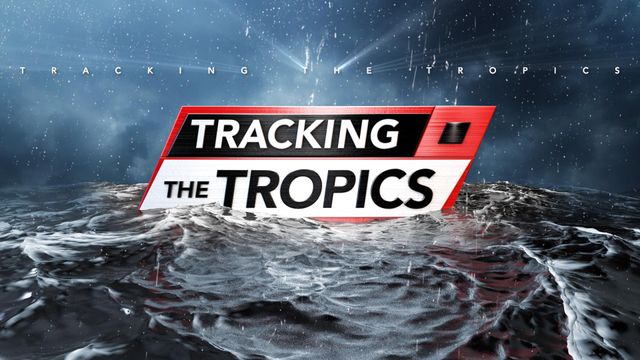Tracking the Tropics: Surviving the Season
Tracking the Tropics: Surviving the Season is your complete guide to the 2020 Atlantic hurricane season.
Posted — UpdatedTracking the Tropics: Surviving the Season is your complete guide to preparing for the 2020 Atlantic hurricane season during a pandemic.
Looking back: Three deadly hurricanes in four years
Matthew and Florence both moved slowly, which helped generate catastrophic, record rainfall. When Matthew hit in early October 2016, it generated double-digit rainfall totals in the Fayetteville area, prompting river flooding. Most of the 28 people killed as a result of Matthew drowned during or after the storm.
Florence was even more devastating, producing an astounding 35 inches of rain in Elizabethtown and 26 inches in Wilmington. Thirty-six people in total lost their lives in North Carolina.
The 2019 hurricane season will forever be linked to Hurricane Dorian, which reached Category 5 strength, making it the most powerful tropical system on record to strike the Bahamas, where it stalled for days before tracking parallel to the East Coast and clipping the Outer Banks as a Category 1 hurricane.
Some residents were trapped in their attics on Ocracoke Island due to a 4- to 7-foot storm surge, Around 190,000 people lost power, and three people were killed in North Carolina. Several tornadoes touched down in Eastern North Carolina, including an EF-2 in Emerald Isle, where homes and campers were destroyed.
The 2020 Atlantic hurricane season continues to progress at record pace.
Hurricane season officially starts on June 1 and ends on Nov. 30, with the most severe storms occurring from mid-August to late October.
Tropical Storm Arthur came two weeks before June 1, the official start of hurricane season. It developed in south Florida and moved over the Atlantic before bringing several inches of rain to the Outer Banks.
Tropical Storm Fay formed off the Carolina coast in July, stirring up rip currents off our shore before making landfall in New Jersey. Tropical Storm Cristobal made headlines in early June ahead of a landfall along the Gulf Coast, prompting conversations about preparing for a natural disaster during a pandemic.
State officials are urging people to take shelter at a hotel, friend or family member's house this year if they need to leave their homes.
During Hurricane Florence, a shelter at Southeast Raleigh High School housed 450 people. But due to the coronavirus, new rules say every person staying in a shelter must have 115 square feet – that’s about a parking space and a half.
In 2018, the American Red Cross housed 22,000 people in 122 emergency shelters before, during and after Florence. Due to the pandemic, they will have less space and offer fewer resources so there is less sharing of items. This year, they are asking people to bring everything they need, including food and bedding.
"We’ll be lessening the number of people in a particular shelter to the best extent possible," said American Red Cross Regional CEO Barry Porter. "But the most important part is people have to get out of the storm. People have to be safe."
COVID-19 impacts on the economy
Officials believe the increase in visitors has to do with the ability to remain socially distanced in the area. With 70 miles of shoreline, the Cape Hatteras National Seashore is the longest stretch of undeveloped beaches left in the eastern U.S.
Flooding is the second leading cause of fatalities from tropical systems. Torrential rain from tropical cyclones can cause flooding hundred of miles inland that can last for days.
During Hurricane Florence, 17 people died due to inland flooding, and billions of dollars in damages were reported.
Some counties have only one zone, while others can have up to five.
Zone A is red, Zone B is orange, Zone C is purple, Zone D is green and Zone E is blue. Zone A is most at risk for storm surge and flooding and will typically be the first evacuated, followed by B.
Only on WRAL: New forecasting technology
The WRAL Weather team is using new and exclusive model forecasts this year to give you and your loved ones as much time as possible to prepare for severe weather.
Often, WRAL meteorologists use a European model to forecast tropical systems because, on average, it is the most accurate model in the world.
Now we’re able to run the European model several times in a row, changing the initial numbers slightly each time, to account for uncertainty that weather brings. The outcome is a range of possibilities in different weather situations.
Using this new information, WRAL meteorologists can find the probability that a tropical system will develop or strengthen.
The tool is useful in predicting not only if tropical systems will form but also the likelihood that they will strengthen into a tropical storm or hurricane.
Rip currents
Rip currents contribute to 80% of surf rescues in the Carolinas. In North Carolina, we average 10 rip current deaths every year.
Avoid swimming when rip current flags are posted or on beaches without lifeguards. If you get caught in a rip current, float on your back or swim parallel to the shore until you are safe. Call for help if you see someone in trouble.
Getting ready and recovering from a hurricane
Related Topics
• Credits
Copyright 2024 by Capitol Broadcasting Company. All rights reserved. This material may not be published, broadcast, rewritten or redistributed.





